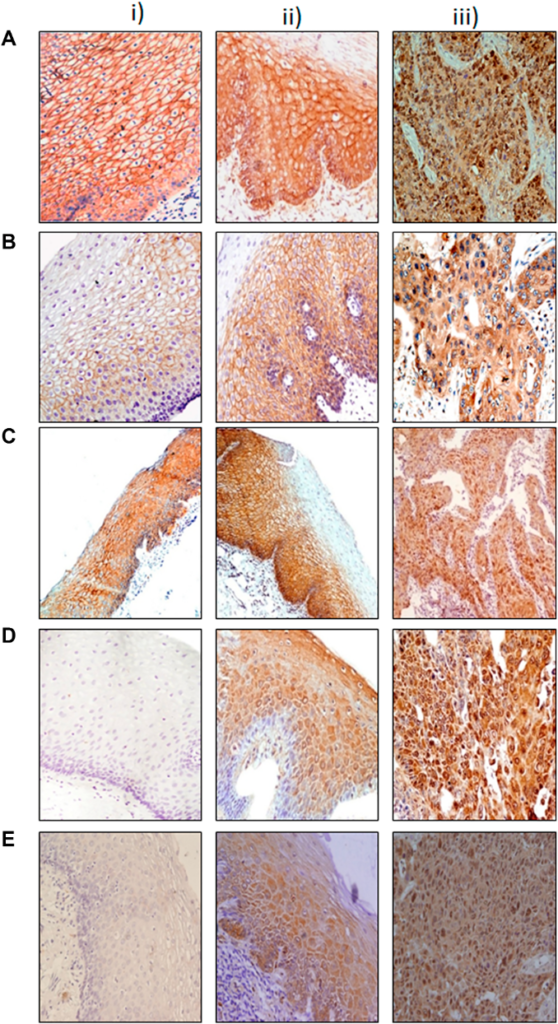In this new study, researchers provide valuable insights into raw areca nut betel quid consumption and esophageal cancer.
—
Betel quid chewing, a traditional custom widely practiced in South Asia, Southeast Asia, the Asia-Pacific region, and East Africa for centuries, involves the consumption of raw areca nut mixed with slaked lime and wrapped in a betel leaf. This habit is particularly popular in certain regions, including Northeast India, where the areca nut is raw, wet, and consumed unprocessed. The act of chewing and swallowing this mixture leads to the release of alkaloids, polyphenols, and tannins. However, the consumption of raw areca nut betel quid has been strongly associated with the development of oral, esophageal, and gastric cancers, and has adverse consequences on oral health. Several studies have shown a significant relationship between periodontitis and betel quid chewing habits in many countries, including India.
In this context, esophageal cancer is a devastating disease that affects millions of people around the world. Recent research has shed light on the role of the Mad2 gene in the development and progression of esophageal cancer, a disease strongly associated with the consumption of raw areca nut betel quid. In a new study, researchers Chongtham Sovachandra Singh, Nabamita Boruah, Atanu Banerjee, Sillarine Kurkalang, Pooja Swargiary, Hughbert Dakhar, and Anupam Chatterjee from The Assam Royal Global University, University of Pennsylvania, LN Mithila University, University of Chicago Medicine, Nazareth Hospital, Laitumkhrah, and North-Eastern Hill University provide valuable insights into the molecular mechanisms underlying Mad2 gene deregulation in esophageal cancer. On February 5, 2024, their new research paper was published in Oncotarget’s Volume 15, entitled, “Differential expression of Mad2 gene is consequential to the patterns of histone H3 post-translational modifications in its promoter region in human esophageal cancer samples.”
Understanding the Mad2 Gene & Raw Areca Nut Betel Quid Consumption
The Mad2 gene, also known as the Mitotic Arrest Deficient 2 gene, plays a crucial role in regulating the spindle assembly checkpoint (SAC) during cell division. The SAC is responsible for ensuring the accurate distribution of chromosomes between daughter cells, preventing the formation of aneuploid cells. Aneuploidy, characterized by an abnormal number of chromosomes, is a hallmark of cancer and can drive tumor development and progression.
Building on this understanding, the researchers in this study turned their attention to the impact of raw areca nut betel quid consumption on Mad2 gene expression in esophageal cancer. They analyzed 131 esophageal cancer biopsies and peripheral blood samples from patients with a history of raw areca nut betel quid consumption. Using quantitative real-time PCR (qRT-PCR) and immunohistochemistry (IHC), they assessed the expression of the Mad2 gene. The results revealed that 41% of the samples overexpressed Mad2, while 50% showed downregulation.
To delve deeper into the underlying mechanisms of Mad2 gene deregulation, the researchers examined the patterns of histone H3 post-translational modifications in the promoter region of the Mad2 gene. Histone proteins, which play a crucial role in regulating gene expression by modulating the accessibility of DNA to the transcriptional machinery, were the focus of this part of the study. They specifically looked at modifications, including histone methylation (H3K4me3, H3K9me3) and histone acetylation (H3K9ac, H3K27ac), which are known to affect gene expression.
In order to assess the recruitment of these histone modifications in the Mad2 gene promoter region, Chromatin immunoprecipitation (ChIP) assays were performed on esophageal tumor tissues and adjacent normal tissues. The results revealed a significant decrease in H3K4me3 and H3K9ac levels in tumor tissues where Mad2 was underexpressed, while an increase in these modifications was observed in tumor tissues with Mad2 overexpression. Interestingly, repressive histone modifications such as H3K9me3 and H3K27me3 showed the opposite pattern.
Finally, the researchers conducted a loss of heterozygosity (LOH) analysis on a panel of 99 esophageal cancer tissues using microsatellite markers mapped to chromosome 4q, where the Mad2 gene is located. This analysis revealed deletions in at least one marker in 62% of the samples with a history of raw areca nut betel quid consumption. The most frequent deletion was observed in the 4q27 region, which is in close proximity to the Mad2 gene, providing further insight into the potential mechanisms of Mad2 deregulation in esophageal cancer.
Conclusions
The study provides valuable insights into the molecular mechanisms underlying Mad2 gene deregulation in esophageal cancer. The disruption of the 4q27 region, coupled with altered histone modifications, plays a crucial role in reducing Mad2 expression in raw areca nut-induced esophageal carcinogenesis. Mad2 gene expression levels can serve as a clinical biomarker for identifying patients with chromosomal abnormalities.
Further research is needed to fully understand the role of the Rb-E2F1 circuit in Mad2 gene deregulation and the implications for esophageal cancer prognosis. Investigating the potential therapeutic targeting of Mad2 and its downstream signaling pathways may lead to more effective treatments for esophageal cancer patients.
The differential expression of the Mad2 gene in esophageal cancer and its association with histone H3 post-translational modifications has implications for esophageal carcinogenesis. Understanding these mechanisms may pave the way for the development of novel diagnostic and therapeutic strategies for esophageal cancer patients.
Click here to read the full research paper in Oncotarget.
—
Oncotarget is an open-access, peer-reviewed journal that has published primarily oncology-focused research papers since 2010. These papers are available to readers (at no cost and free of subscription barriers) in a continuous publishing format at Oncotarget.com. Oncotarget is indexed/archived on MEDLINE / PMC / PubMed.
Click here to subscribe to Oncotarget publication updates.
For media inquiries, please contact media@impactjournals.com.


